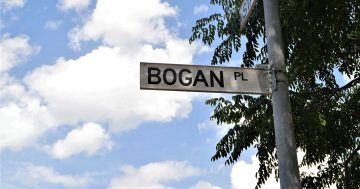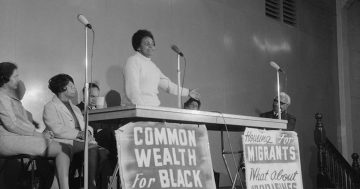
What’s in a name? There is a move to have Canberra’s suburb and street names reviewed in case they are commemorating “villains as heroes”.
A move to have Canberra’s suburb and street names reviewed in case they are commemorating “villains as heroes” has raised concerns about the time and resources needed and the logistical difficulties associated with place name changes.
ACT Labor MLA Bec Cody is calling for the ACT Place Names Committee to review the territory’s place names with the aim of changing them if they are causing “ongoing hurt” in the community.
Ms Cody maintains that the behaviour of some of the people who have streets or suburbs named after them is “criminal, reprehensible, and/or abhorrent”.
However, the co-chair of the ACT Place Names Committee, Jeffrey Brown, said that place names are chosen after a rigorous process and are meant to be “enduring”.
“There are 6,000 or 7,000 names if you include all the place names on record in the ACT. How much time would that take?” queried Mr Brown.
“The usual thing is that place names are enduring and would only be changed in exceptional circumstances.
“If other information comes up it may be an opportunity to add that information – good or bad – on the website.”
“We can put on the record that there are differing views about that person’s legacy and use it as an educational opportunity.”
On Tuesday (30 October) Ms Cody will move in the Legislative Assembly that all existing place names be reviewed to “ensure they meet with community standards” and hopes the motion will be debated before Christmas.
She told Region Media that since her call has become public this morning, her office has been inundated with requests from people for place names to be changed.
Place names of concern that people have raised include Jardine Street in Kingston and Haig Park.
Ms Cody said she is not advocating any particular name changes as she believes there are several different historical figures inappropriately commemorated in ACT place names and she does not want to imply that one cause is more important than another.

File photo of Labor MLA Bec Cody.
Ms Cody said that during her 30 plus years as a hairdresser, people often raised with her the hurt they felt over particular place names.
“The hurt they feel about place names is not to be shied away from,” Ms Cody said.
“It’s time we take a good look at those people because they may not be the heroes they were originally thought to be.”
Concerns over the choice of a historical name most recently came to the fore in Canberra when ‘Bean’ was chosen by the Australian Electoral Commission as the name of the ACT’s new electorate in recognition of war correspondent Charles Edwin Woodrow Bean.
At the time, the nomination of Bean drew criticism and objections from those who questioned his anti-Semitic attitude towards World War 1 general Sir John Monash or preferred a more ‘diverse’ choice.
Concerns have also been raised about ‘William Slim Drive’, which was named after Australia’s 13th Governor-General who has been accused of committing sexual abuse against children.
Mr Brown said there have only been a couple of name changes in the ACT’s history that he is aware of and both were changes to road names.
He said that both cases were because there were “certain connotations to the name that were offensive to the people living there” but weren’t associated with a change in a person’s “legacy”.
Even just changing a road name involved a lengthy process in which every person in the street had to be consulted and changes had to be made to databases, street directories, GNAV files and the like.
Mr Brown said that this was a big process just for a road name change but would be huge for changing a suburb’s name.
“You’ve got to get everyone in that suburb consulted and I certainly know I haven’t got the resources to do that,” he said.
“As a policy as soon as you change a name it can take a generation for people to recognise the name change.”
Mr Brown gave the example of a name change which occurred for a South Australian bridge.
“Sixty years later they had to change it back because people weren’t using it.”
Mr Brown explained that it can take months to select a place name and there is a lot of research involved, with the ACT Place Names Committee ensuring that they meet national and international standards.
The process starts with names being researched by his staff and then being considered by the committee. They are then put to the ACT Planning Minister or a delegate for approval before going through a ‘disallowable instrument process’ where they sit in the Legislative Assembly for six days and can be challenged by MLAs – something which rarely happens.
“One of the main things in the policy is that you want names that don’t sound like others. Unique addressing is very important,” Mr Brown said.
He said that they also only commemorate people 12 months after they have died and following consultation with the family.
“Most times you are commemorating people for their public achievements,” he said.
Do you think Canberra’s suburb and street names should be reviewed or that this would be a waste of time and money? Are there any names you are concerned about? Let us know in the comments below.














